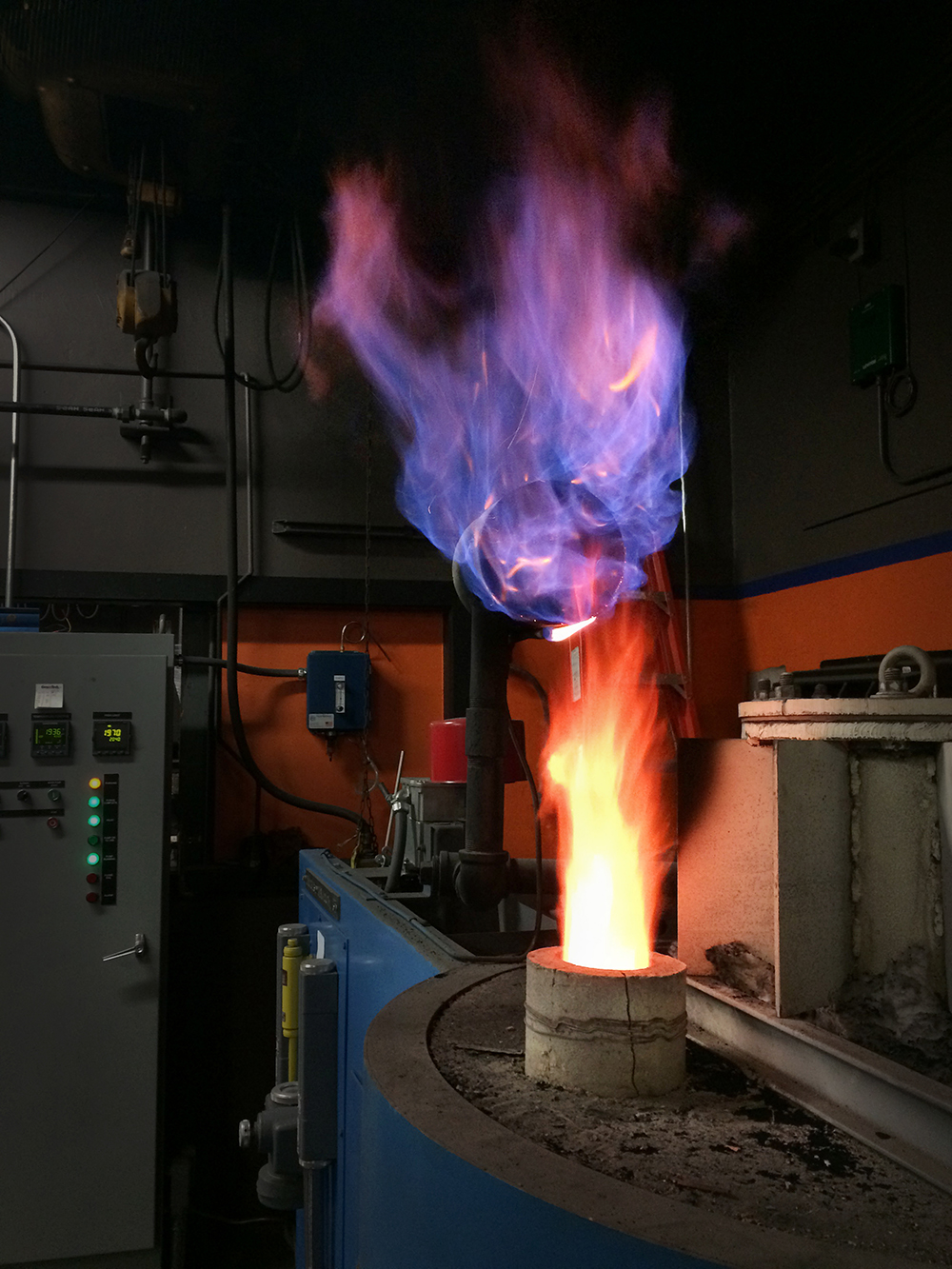 Our heat treatment process for oil hardening steel is first done in a controlled atmosphere furnace. This atmosphere prevents the blades from oxide, scale, and decarburization that can occur to oil hardening steels at high temperature. Blades are quenched in aerospace grade quenchant oil that is pre heated to the correct temperature to ensure minimal warping and uniformed properties in the blade. An optional addition to the process is cryo treatment following the quench, where we submerge the blades into a subzero temperature environment to stabilize the blade and eliminate retained austenite. We will follow up with tempering the blade to a final hardness, and offer the option of providing a second temper to help ensure a uniform temper throughout the blade to the desired hardness. Following this, we offer a straightening service option buy experienced workers with advanced equipment to ensure minimal warping and bends in the final product. We test and report the hardness on the appropriate scale and if desired can provide certification of the heat treatment process as well as a final hardness.
Our heat treatment process for oil hardening steel is first done in a controlled atmosphere furnace. This atmosphere prevents the blades from oxide, scale, and decarburization that can occur to oil hardening steels at high temperature. Blades are quenched in aerospace grade quenchant oil that is pre heated to the correct temperature to ensure minimal warping and uniformed properties in the blade. An optional addition to the process is cryo treatment following the quench, where we submerge the blades into a subzero temperature environment to stabilize the blade and eliminate retained austenite. We will follow up with tempering the blade to a final hardness, and offer the option of providing a second temper to help ensure a uniform temper throughout the blade to the desired hardness. Following this, we offer a straightening service option buy experienced workers with advanced equipment to ensure minimal warping and bends in the final product. We test and report the hardness on the appropriate scale and if desired can provide certification of the heat treatment process as well as a final hardness.
честные казино с быстрыми выплатами
бездепозитные бонусы казино
играть в лучшем казино на деньги
база казино с бездепозитным бонусом
онлайн казино России
casino oyunu
 Oil Hardening Steel earns its name from being hardened by quenching in oil after being at high temperature. These steels are usually designated by the letter “O” followed by a number to designate their specific composition or properties in the oil hardening category. The most common alloy used for blades that we see are O-1 tool steels. Oil hardening steel is an optimal choice for blade material because it is cheap, readily available, minimal warping during quenching, and has great wear resistance.
Oil Hardening Steel earns its name from being hardened by quenching in oil after being at high temperature. These steels are usually designated by the letter “O” followed by a number to designate their specific composition or properties in the oil hardening category. The most common alloy used for blades that we see are O-1 tool steels. Oil hardening steel is an optimal choice for blade material because it is cheap, readily available, minimal warping during quenching, and has great wear resistance.
Proper of heat treating oil hardening steel is important because it ensures minimal warping and also minimizes surface contamination at elevated temperature. Surface contamination can take the form of decarburization, carburization, or intergranular oxidation; all of which will lead to a poor surface condition of a blade and promote easy wear, cracking or brittleness. At Byington Steel we minimize all these effects with precise control and maintenance of our furnaces’ atmospheres and having experienced personal performing the heat treatment.

